Eight of us visited Stora Le for a week's canoeing during at the start of September. The weather was fine, except for contrary winds which blew consistently across the lake for nearly the entire period, so depriving us of the chance to rig sail.
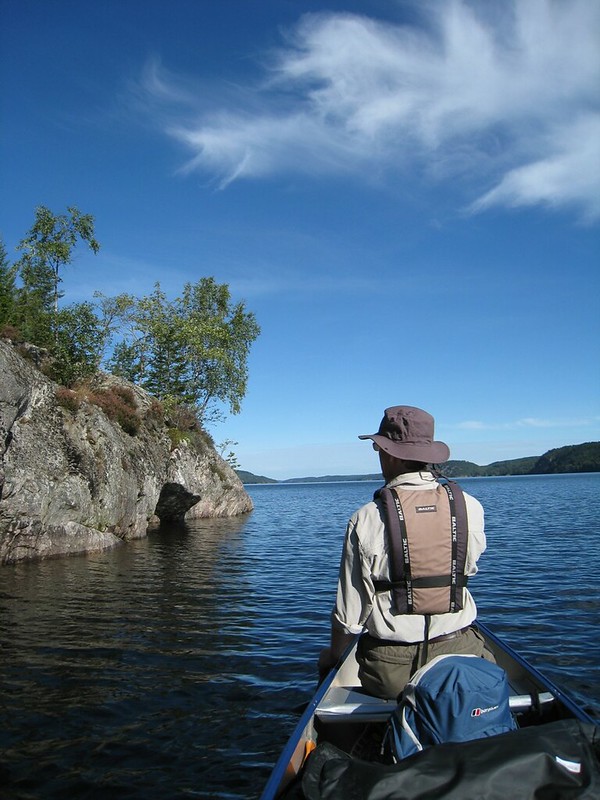 img_5099 by Last Scratch, on Flickr
img_5099 by Last Scratch, on Flickr
First day on the water, an easy paddle of about 9km passed granite shores.
 img_5104 by Last Scratch, on Flickr
img_5104 by Last Scratch, on Flickr
The ability of the local trees to find foot holds never ceased to amaze me.
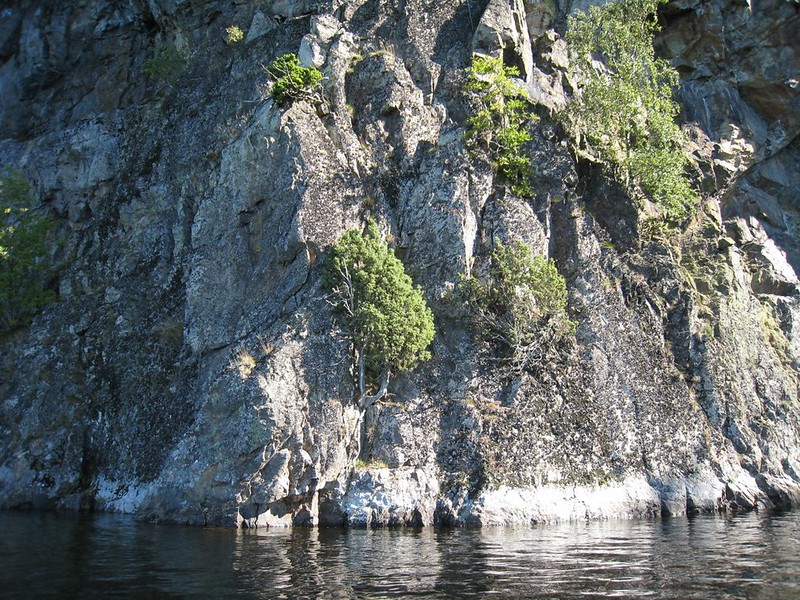 img_5112 by Last Scratch, on Flickr
img_5112 by Last Scratch, on Flickr
As a group of eight, we had to use the designated camp sites, but we were free to stop where we liked for lunch and it usually wasn't too hard to find good spots.
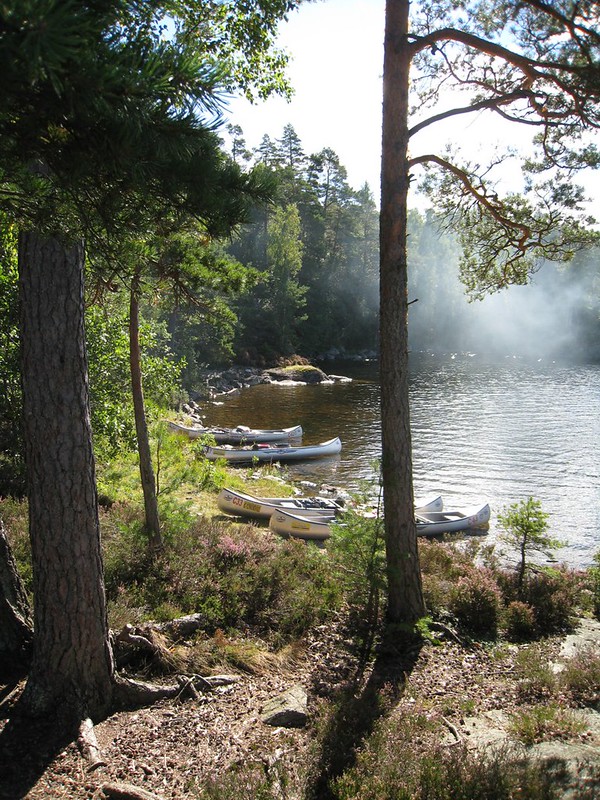 img_5115 by Last Scratch, on Flickr
img_5115 by Last Scratch, on Flickr
The designated sites are pretty good too, with open fronted Dano shelters, a single composting toilet, some bins for rubbish and a permanent fire site. Those that we stayed at were located on islands out in the lake, the first being the island of Skotton.
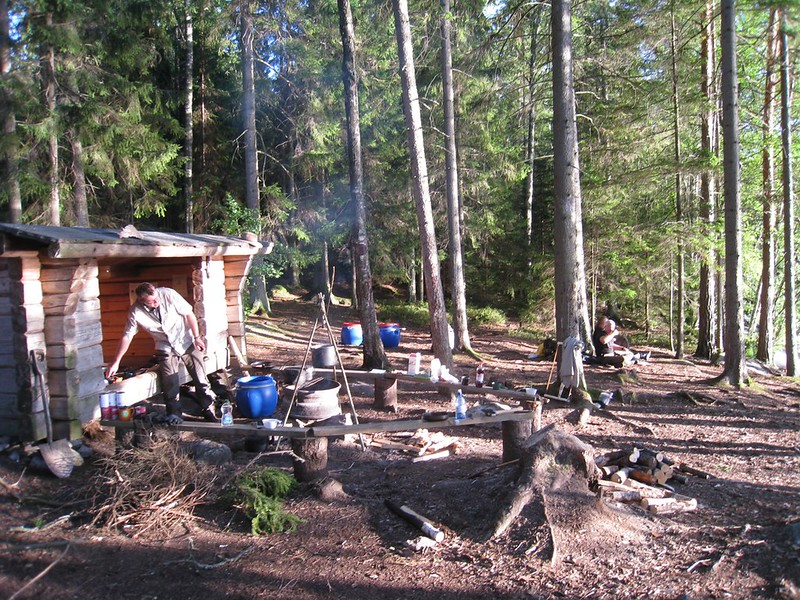 img_5129 by Last Scratch, on Flickr
img_5129 by Last Scratch, on Flickr
We had at least one great sunset
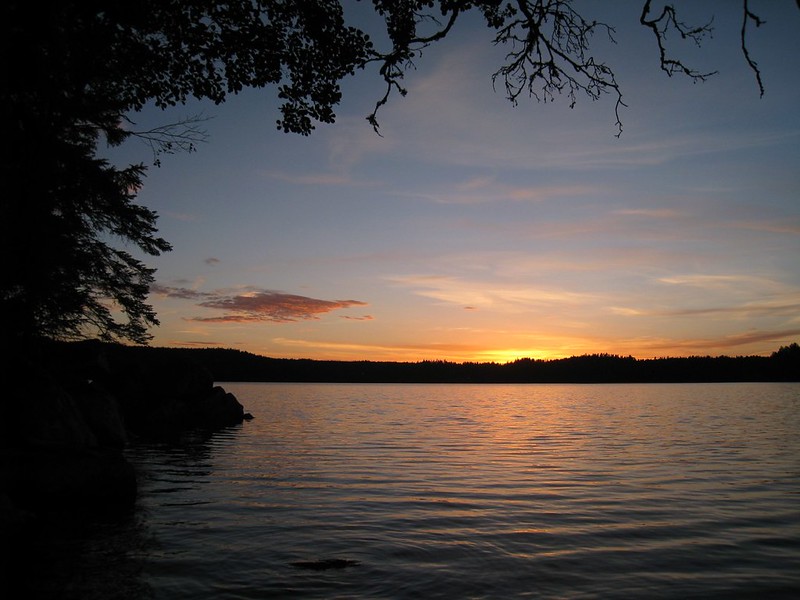 img_5140 by Last Scratch, on Flickr
img_5140 by Last Scratch, on Flickr
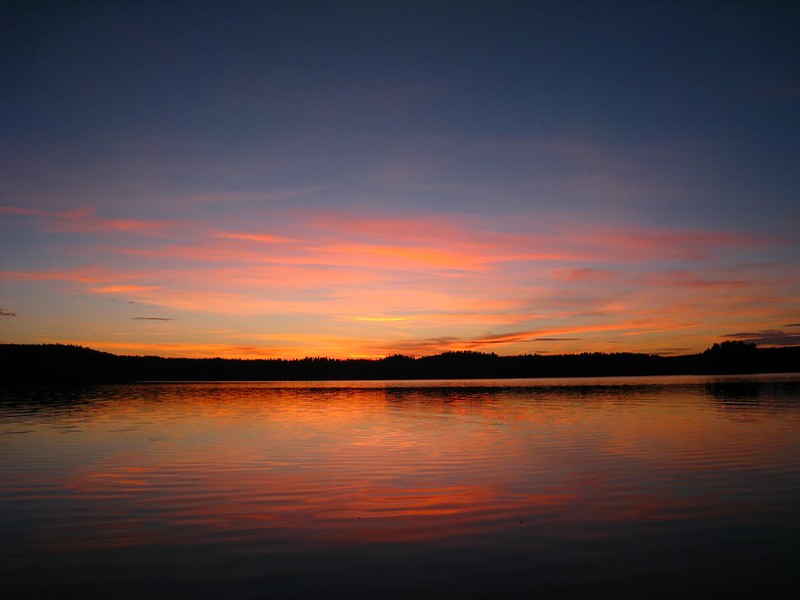 img_5144 by Last Scratch, on Flickr
img_5144 by Last Scratch, on Flickr
The next day we set off for a day trip, leaving camp set up on Skotton. First to a sheltered bay on the west side of the lake to look for beaver.
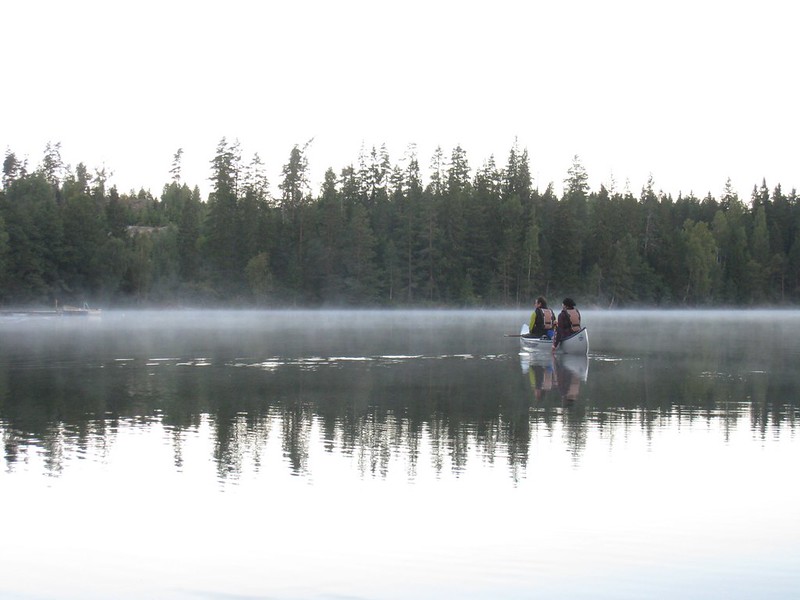 img_5160 by Last Scratch, on FlickrWe saw several, but none were positioned well enough for me to get a decent shot. The lodge was still very obvious.
img_5160 by Last Scratch, on FlickrWe saw several, but none were positioned well enough for me to get a decent shot. The lodge was still very obvious.
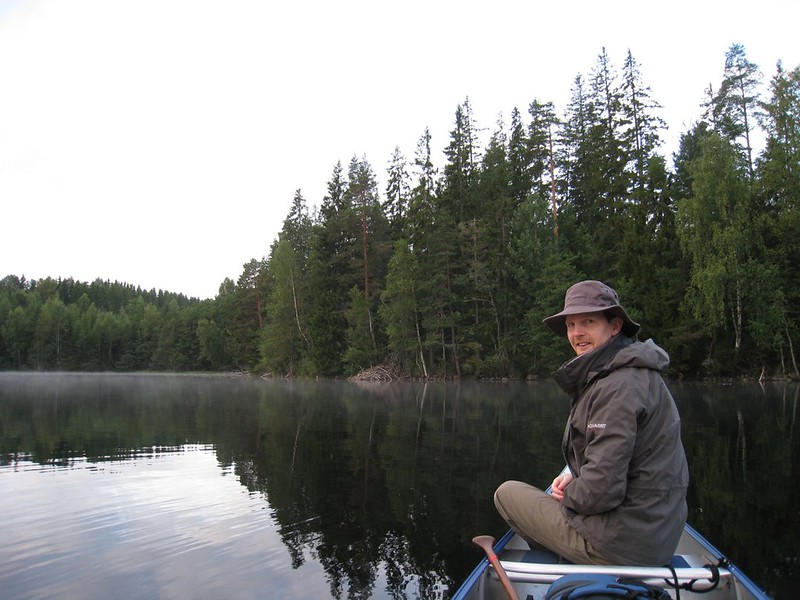 img_5164 by Last Scratch, on Flickr
img_5164 by Last Scratch, on Flickr
A few kilometers further north we stashed the canoes and headed inland to the Trestiklan national park.
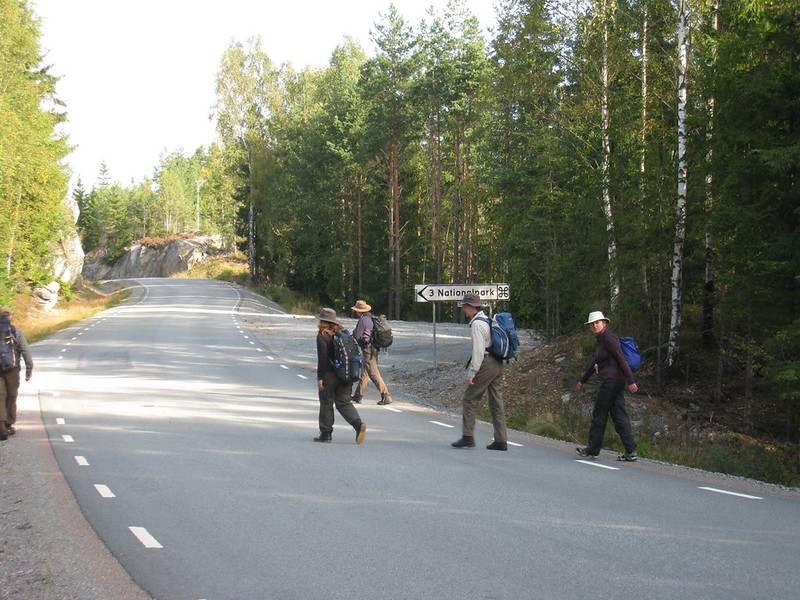 img_5167 by Last Scratch, on Flickr
img_5167 by Last Scratch, on Flickr
The shores at the southern end of Stora Le are devoid of bogs, but up in the hills we found many meres and muskeg areas, some were very pretty, others just looked like they would be hell to hike through.

Trestiklan is said to be the largest wild area in southern Sweden, and lies right up against the Norwegian border. The forest hasn't been touched for over a hundred years and in addition to the ubiquitous moose, the park can be visited by wolves during the winter.
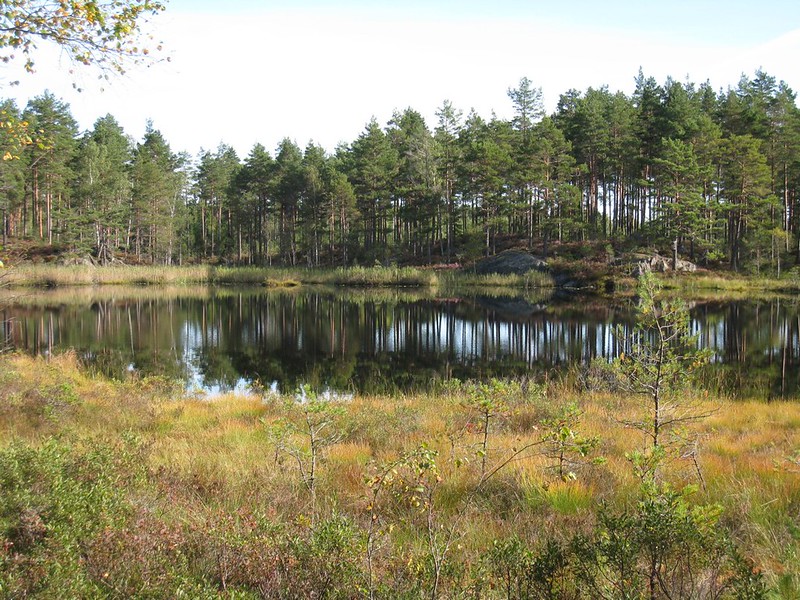 img_5169 by Last Scratch, on Flickr
img_5169 by Last Scratch, on Flickr
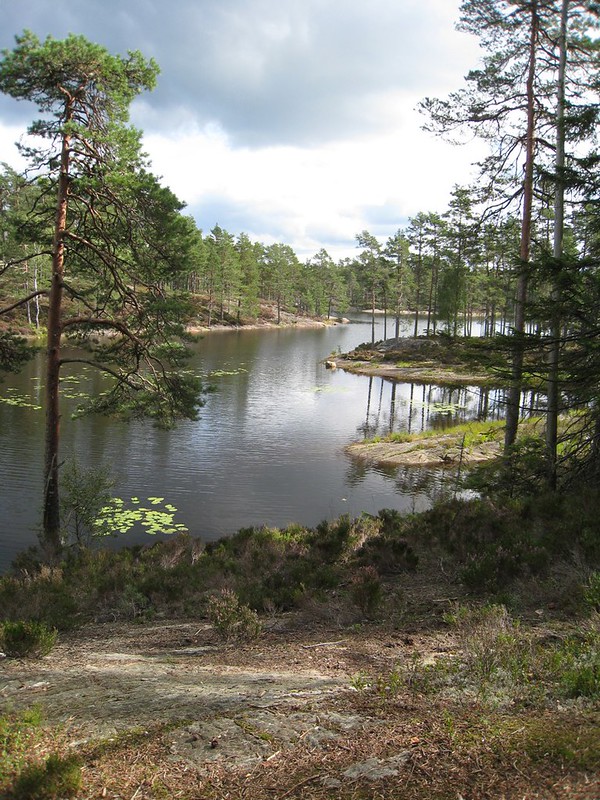 img_5202 by Last Scratch, on Flickr
img_5202 by Last Scratch, on Flickr
The next day we pushed on north with the goal of reaching Transholmana, which was about 18km up the lake. By then the wind was getting up, so we skirted islands when we could, there are plenty around.
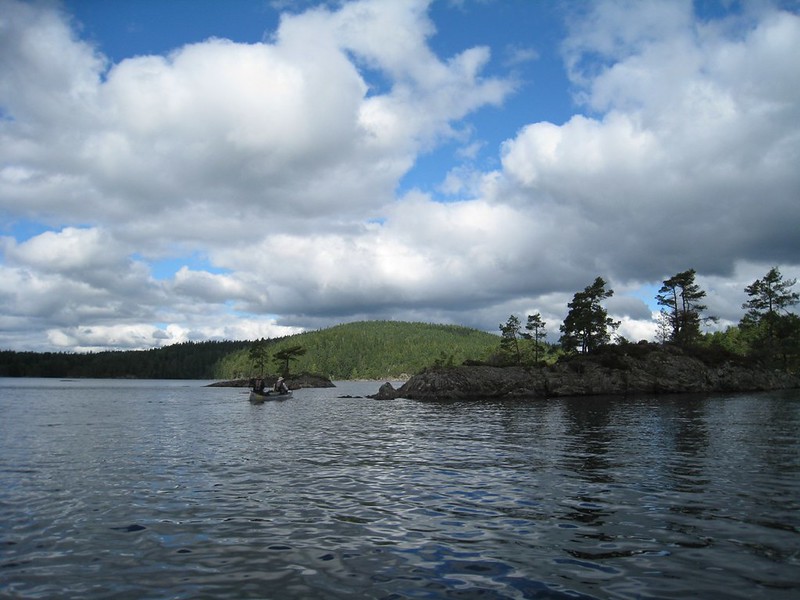 img_5228 by Last Scratch, on Flickr
img_5228 by Last Scratch, on Flickr
Tronsholmana is a pair of islands, but is still much smaller that Skotton. We chose to camp on the western side of the larger island as this was more out of the wind.
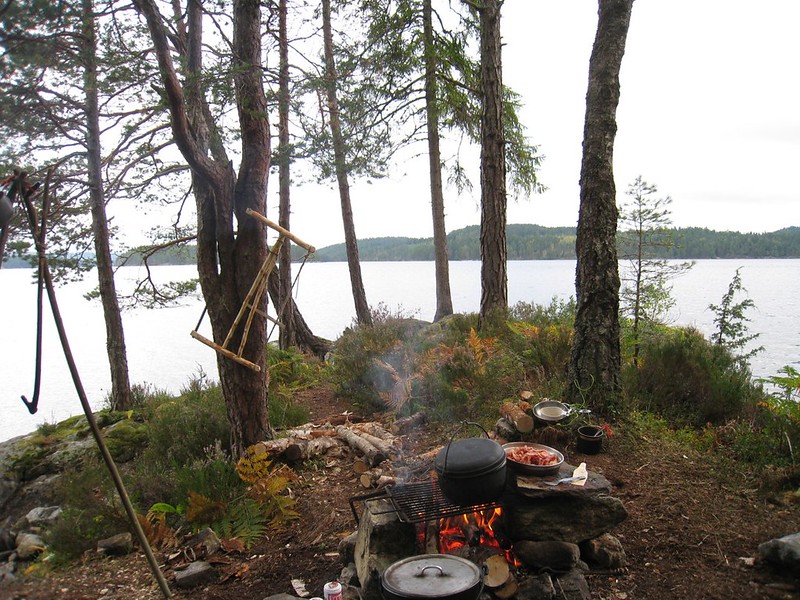 img_5276 by Last Scratch, on Flickr
img_5276 by Last Scratch, on Flickr
Early in the year you can find that you need to forage for fire wood, and on an island as small as Tronsholmana there is none to spare, but we were lucky to find that some lengths of birch had been dropped off by the folk who service the camp sites. All it needed was sawing to length. The rough bucksaw we made on arrival more than earned its keep!
The place is made for hammocks, tarps, and teepees and although the canoe rental site offers 2-man Vaude tents along with the canoes and provision barrels, only two of our group opted to use them; everyone else brought tarps or tent-age from home.
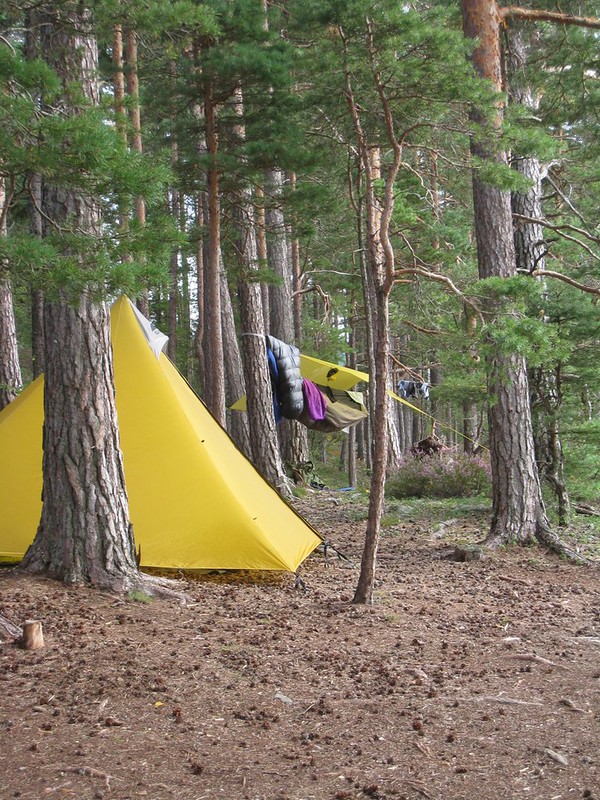 img_5294 by Last Scratch, on Flickr
img_5294 by Last Scratch, on Flickr
The return journey was much like the outward one...decent weather, but windy.
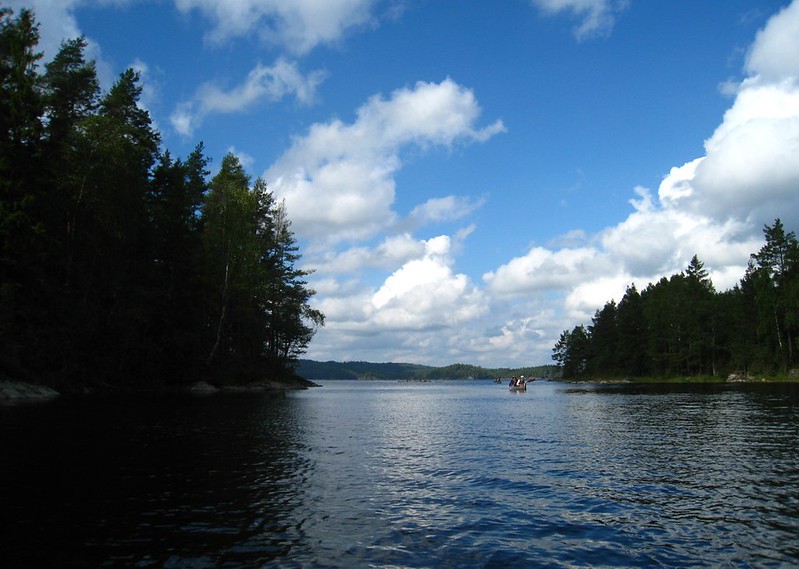 img_5317 by Last Scratch, on Flickr
img_5317 by Last Scratch, on Flickr
We camped again on Skotton, but on the other end, so it didn't feel like we were retracing our steps too much.
There is a fair bit of wild life around, but a lot is hard to see. There were a lot of black throated divers on the lake, and we also saw a pair of peregrine falcons, but no ospreys this time. We saw a number of beaver, but the closest we got to moose was when two of us heard one crashing away in the brush while we were fishing late one evening.
The fishing in Stora Le is reputed to be very good, but most is done by trolling out in the lake. We had limited success with the local pike and perch while fishing the shore.
All too soon we were back at the canoe rental site and packing to go home.
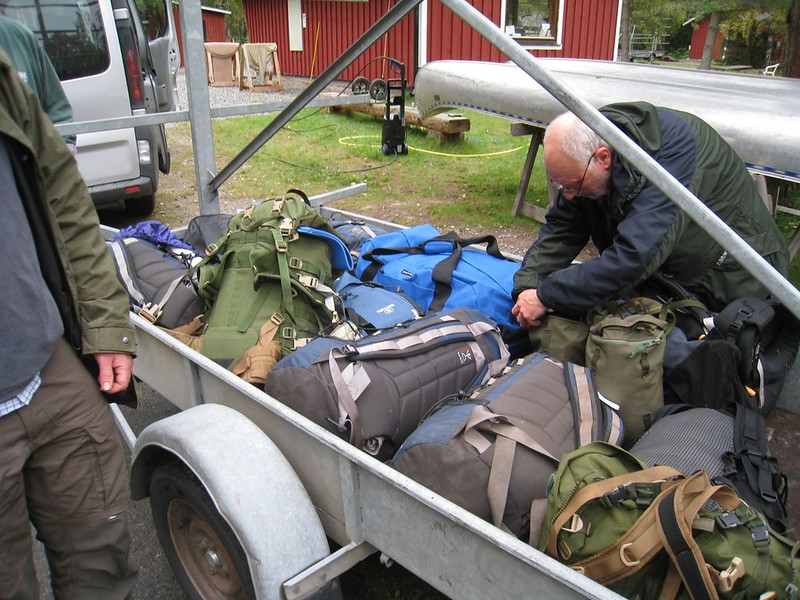 img_5370 by Last Scratch, on Flickr
img_5370 by Last Scratch, on Flickr
We had a great time and I can thoroughly recommend the place. This was my second visit and I would be quite happy to go back, although I think the plan will be to put in further up the lake, so as to see new vistas...can't wait! Roll on 2011
 img_5099 by Last Scratch, on Flickr
img_5099 by Last Scratch, on FlickrFirst day on the water, an easy paddle of about 9km passed granite shores.
 img_5104 by Last Scratch, on Flickr
img_5104 by Last Scratch, on FlickrThe ability of the local trees to find foot holds never ceased to amaze me.
 img_5112 by Last Scratch, on Flickr
img_5112 by Last Scratch, on FlickrAs a group of eight, we had to use the designated camp sites, but we were free to stop where we liked for lunch and it usually wasn't too hard to find good spots.
 img_5115 by Last Scratch, on Flickr
img_5115 by Last Scratch, on FlickrThe designated sites are pretty good too, with open fronted Dano shelters, a single composting toilet, some bins for rubbish and a permanent fire site. Those that we stayed at were located on islands out in the lake, the first being the island of Skotton.
 img_5129 by Last Scratch, on Flickr
img_5129 by Last Scratch, on FlickrWe had at least one great sunset
 img_5140 by Last Scratch, on Flickr
img_5140 by Last Scratch, on Flickr  img_5144 by Last Scratch, on Flickr
img_5144 by Last Scratch, on FlickrThe next day we set off for a day trip, leaving camp set up on Skotton. First to a sheltered bay on the west side of the lake to look for beaver.
 img_5160 by Last Scratch, on FlickrWe saw several, but none were positioned well enough for me to get a decent shot. The lodge was still very obvious.
img_5160 by Last Scratch, on FlickrWe saw several, but none were positioned well enough for me to get a decent shot. The lodge was still very obvious. img_5164 by Last Scratch, on Flickr
img_5164 by Last Scratch, on FlickrA few kilometers further north we stashed the canoes and headed inland to the Trestiklan national park.
 img_5167 by Last Scratch, on Flickr
img_5167 by Last Scratch, on FlickrThe shores at the southern end of Stora Le are devoid of bogs, but up in the hills we found many meres and muskeg areas, some were very pretty, others just looked like they would be hell to hike through.

Trestiklan is said to be the largest wild area in southern Sweden, and lies right up against the Norwegian border. The forest hasn't been touched for over a hundred years and in addition to the ubiquitous moose, the park can be visited by wolves during the winter.
 img_5169 by Last Scratch, on Flickr
img_5169 by Last Scratch, on Flickr img_5202 by Last Scratch, on Flickr
img_5202 by Last Scratch, on FlickrThe next day we pushed on north with the goal of reaching Transholmana, which was about 18km up the lake. By then the wind was getting up, so we skirted islands when we could, there are plenty around.
 img_5228 by Last Scratch, on Flickr
img_5228 by Last Scratch, on FlickrTronsholmana is a pair of islands, but is still much smaller that Skotton. We chose to camp on the western side of the larger island as this was more out of the wind.
 img_5276 by Last Scratch, on Flickr
img_5276 by Last Scratch, on FlickrEarly in the year you can find that you need to forage for fire wood, and on an island as small as Tronsholmana there is none to spare, but we were lucky to find that some lengths of birch had been dropped off by the folk who service the camp sites. All it needed was sawing to length. The rough bucksaw we made on arrival more than earned its keep!
The place is made for hammocks, tarps, and teepees and although the canoe rental site offers 2-man Vaude tents along with the canoes and provision barrels, only two of our group opted to use them; everyone else brought tarps or tent-age from home.
 img_5294 by Last Scratch, on Flickr
img_5294 by Last Scratch, on FlickrThe return journey was much like the outward one...decent weather, but windy.
 img_5317 by Last Scratch, on Flickr
img_5317 by Last Scratch, on FlickrWe camped again on Skotton, but on the other end, so it didn't feel like we were retracing our steps too much.
There is a fair bit of wild life around, but a lot is hard to see. There were a lot of black throated divers on the lake, and we also saw a pair of peregrine falcons, but no ospreys this time. We saw a number of beaver, but the closest we got to moose was when two of us heard one crashing away in the brush while we were fishing late one evening.
The fishing in Stora Le is reputed to be very good, but most is done by trolling out in the lake. We had limited success with the local pike and perch while fishing the shore.
All too soon we were back at the canoe rental site and packing to go home.
 img_5370 by Last Scratch, on Flickr
img_5370 by Last Scratch, on FlickrWe had a great time and I can thoroughly recommend the place. This was my second visit and I would be quite happy to go back, although I think the plan will be to put in further up the lake, so as to see new vistas...can't wait! Roll on 2011
Last edited:



